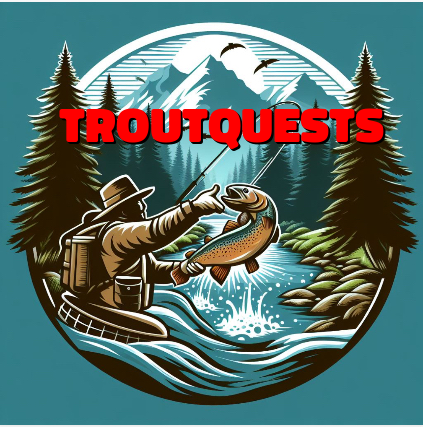Ontario Brook Trout
I’m here to help you with one of angling’s best-kept secrets – Brook Trout fishing in Ontario. If you want to experience the pinnacle of freshwater fishing, look no further. Ontario isn’t just a good place for Brook Trout; it’s arguably the best place in the world.
This isn’t just about the abundance of pristine fishing spots scattered across the province; it’s also about the brilliant fish you’ll find here. The Brook Trout, or as locals might call them, Speckles or Char, go by the scientific name of Salvelinus Fontinalis. They’re more than just another fish in the water – they’re swimming gems with vibrant colours that could dazzle any angler’s eyes.
You’ll learn about these beautiful, tasty, and rare fish weighing up to 16 pounds. And while they might be elusive, with the right know-how, you’ll be reeling in these substantial catches in no time.
Choose something that resonates with you – the thrill of battling a big catch or enjoying the tranquil beauty of Ontario’s vast waterways. Brook Trout thrive here, mainly due to the cold, clean waters that flow into James Bay, Hudson’s Bay, around Lake Nipigon, and east of Lake Huron.
Pretty wild, right? But it’s not just the now that’s fascinating. These fish were affected by the last ice age. Ontario has become a sanctuary for its population, which saw a significant decline in regions like Saskatchewan, Manitoba, and Northwestern Ontario.
However, understanding these fish and their environment is critical to a successful angling experience. That’s precisely what you’ll gain in the next section – a deep dive into the habitats and patterns that make Brook Trout fishing in Ontario a unique challenge and thrill.
The Habitats and Habits of the Elusive Char
You’ll learn just how imperative those chilly streams and lakes are for brook trout. They’re not just picky about where they reside; they demand cold, oxygen-rich waters to thrive. This is why Ontario’s natural, cold water ecosystems are such a perfect fit for these fish.
Understanding the seasonal migration of brook trout is like unlocking a secret code for anglers. As the seasons transform, so do their habitats. Spring and fall? You’ll find them in shallow waters, enjoying the moderate temps. Come summer and winter, they plunge into the depths where it’s cooler and more stable.
Choose your fishing spot wisely. Knowledge is king to increase your chances of a great catch. Ontario is bounteous with rivers and lakes that are home to brook trout, particularly those that flow into James Bay or Hudson’s Bay. Lake Nipigon and regions east of Lake Huron? These are hotspots every angler should mark on their map.
But it’s not just about chasing the thrill of the catch. It’s also about acknowledging the brook trout’s position in Ontario’s waterways. These fish are a key species in their habitats, playing a vital role in maintaining the balance of the food chain with far-reaching impacts on other aquatic and terrestrial wildlife.
Legacy of the Ice Age: Brook Trout Survival and Conservation
Have you ever wondered about the history of the fish you’re angling to catch? When it comes to Brook Trout in Ontario, a rich tale stretches back to the last ice age. While thriving today, these resilient fish faced significant challenges thousands of years ago. The ice sheets covering vast North America profoundly affected their habitat and population.
I’m here to help you understand how these changes shaped the current state of Brook Trout in the region. These fish saw their range shrink, particularly around Saskatchewan, Manitoba, and Northwestern Ontario. The retreating ice altered the landscape, creating new water systems and isolating trout populations.
Fortunately, the story doesn’t end there. People who are concerned have been working tirelessly to ensure that Brook Trout can flourish. From habitat restoration projects to carefully managing fishing practices, efforts are being made to safeguard these fish for future generations.
Understanding the ecosystem and supporting sustainable fishing practices are critical if you want to contribute to the pursuit of conservation. Adhering to catch-and-release principles in some areas and following local regulations help maintain the delicate balance within these aquatic ecosystems.
A lot is happening very quickly in the field of conservation, and as anglers, we’re a part of it. Whether participating in habitat cleanup events or donating to conservation organizations, every little bit helps preserve the Brook Trout legacy. This isn’t just about fishing; it’s also about stewardship of our natural world.
Cast Into Adventure: Tips for Successful Brook Trout Fishing in Ontario
Now, let’s talk about getting you ready for a memorable Brook Trout fishing trip in Ontario. I will give you some insider tips that can make a difference between an ordinary outing and a phenomenal fishing experience.
Choose the right gear for the job. You want a light to medium action rod and, for fly fishing enthusiasts, a selection of flies that mimic the local insects.
Timing is crucial. Brook Trout are most active during low light conditions, so aim for early mornings or evenings. Spring and fall are prime seasons as the water temperature is just right.
Don’t forget about the location. Some of the best spots require a bit of a trek, so be prepared for an adventure. Areas around Lake Nipigon and the rivers flowing into James Bay and Hudson’s Bay are known hotspots.
After you’ve landed your catch, it’s time to enjoy the fruits of your labour. Brook Trout are renowned for their taste. Whether pan-fried, baked, or grilled, it will be a treat.
Always keep conservation in mind. Practice catch and release, or limit your take home to ensure that future anglers will continue to capture the thrill of catching these wonderfully coloured fish.
There’s no better way to connect with nature than by wading into the cool waters of Ontario in pursuit of Brook Trout. So pack your gear, respect the environment, and reel in the adventure of a lifetime.
